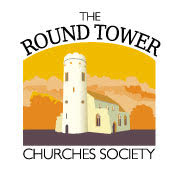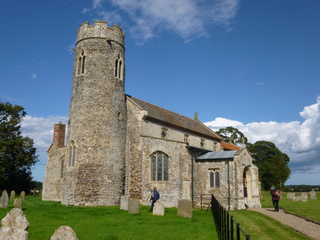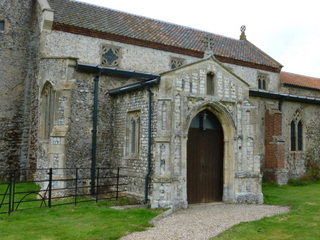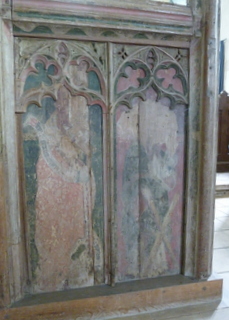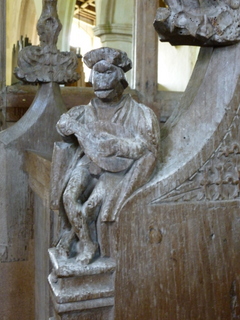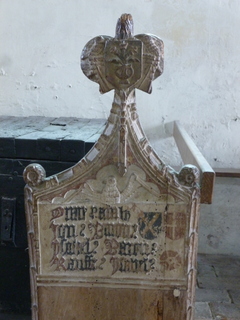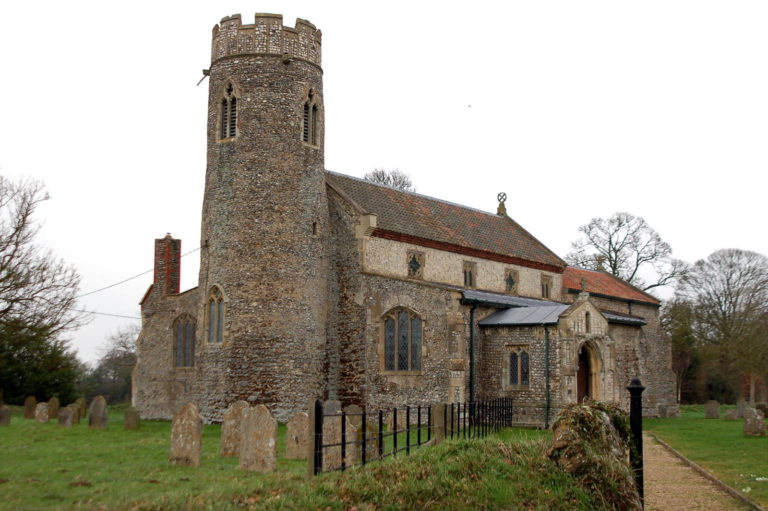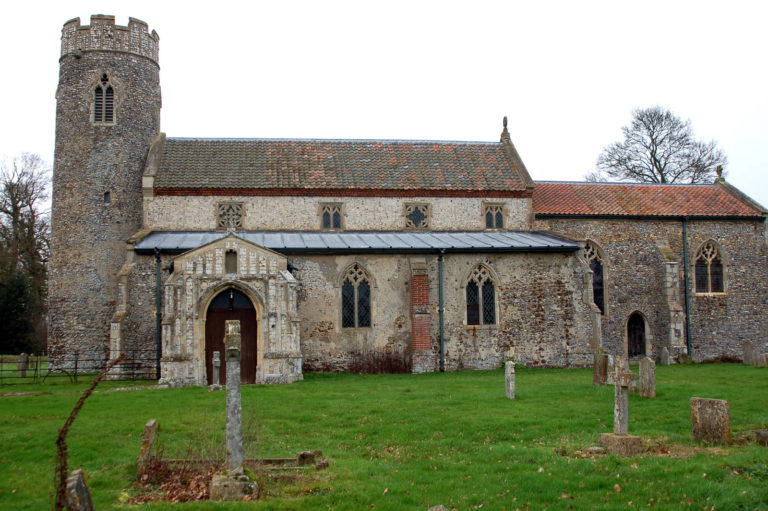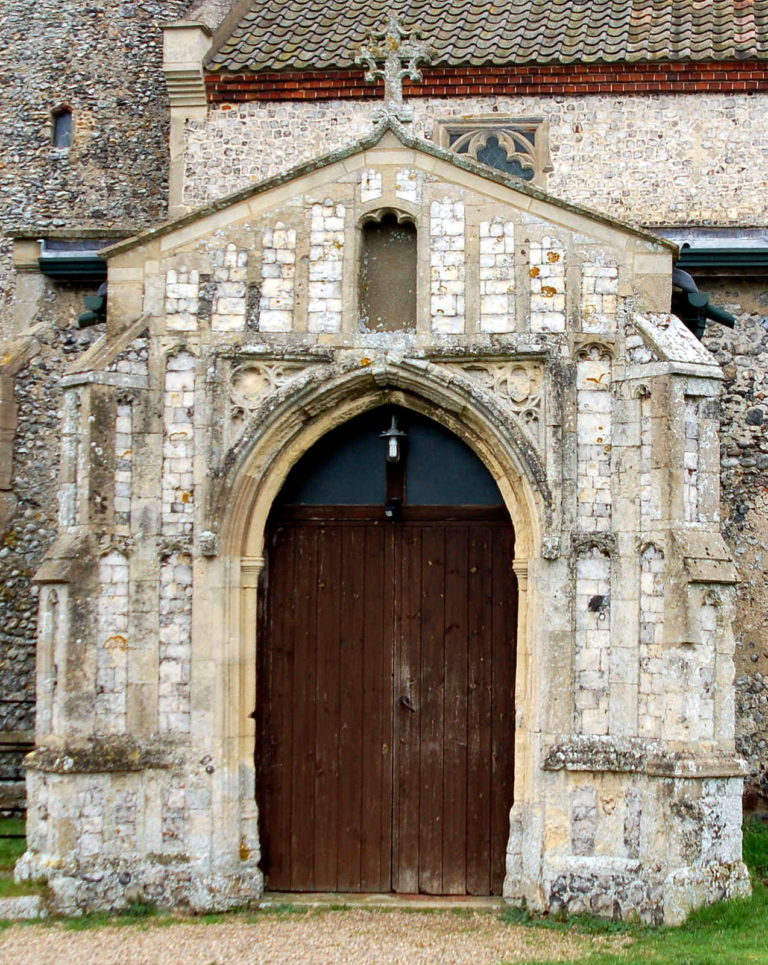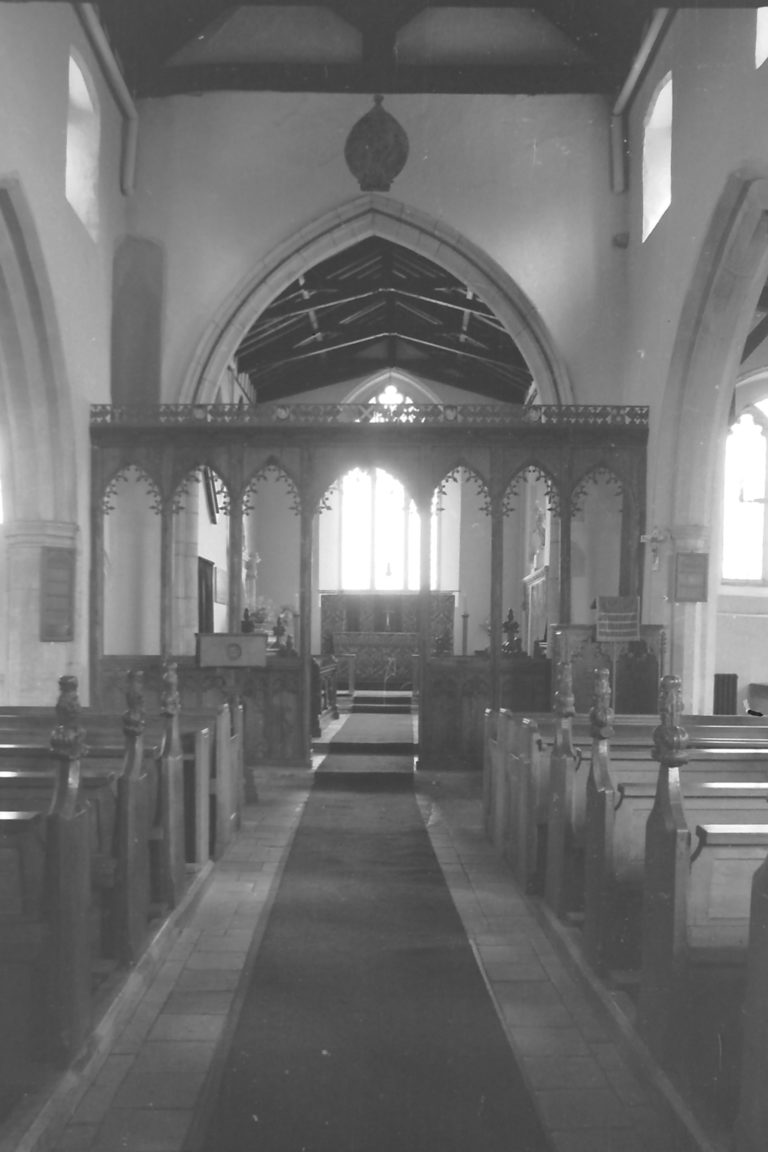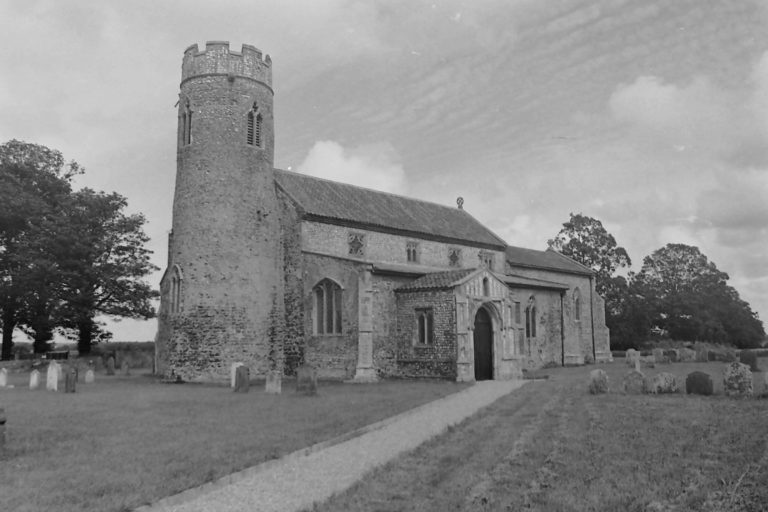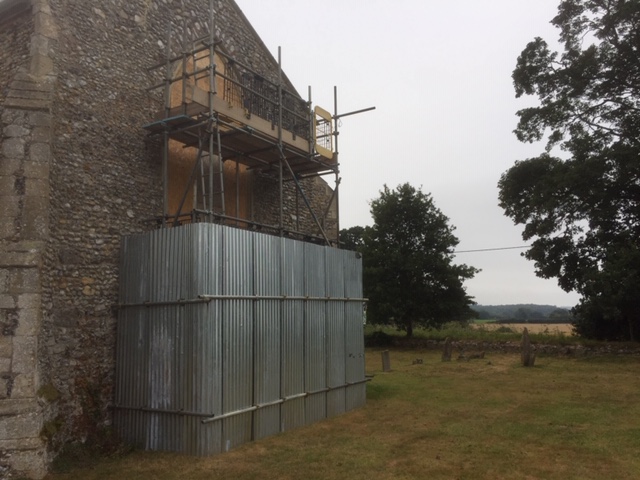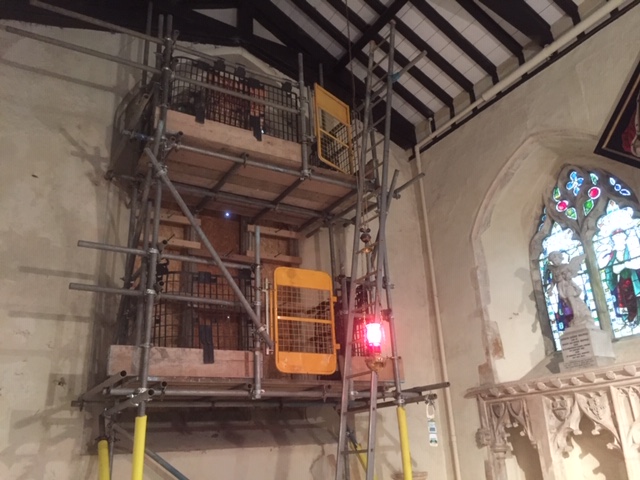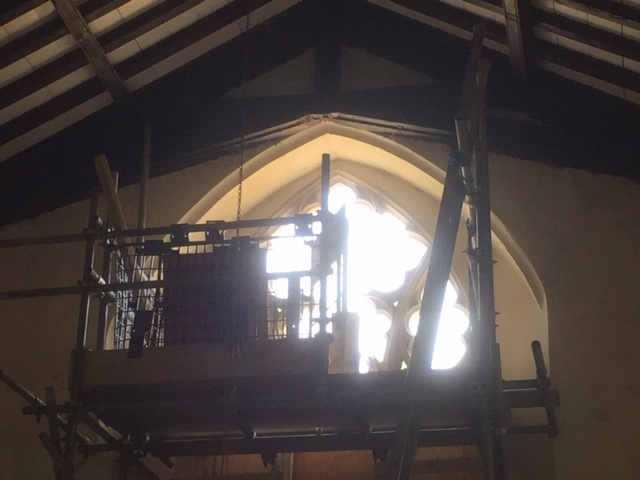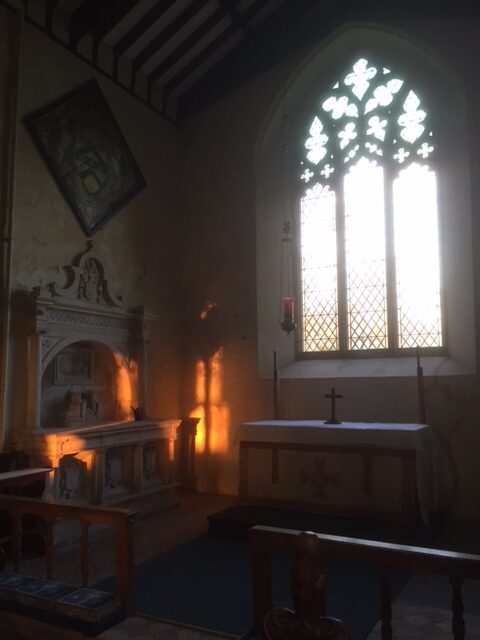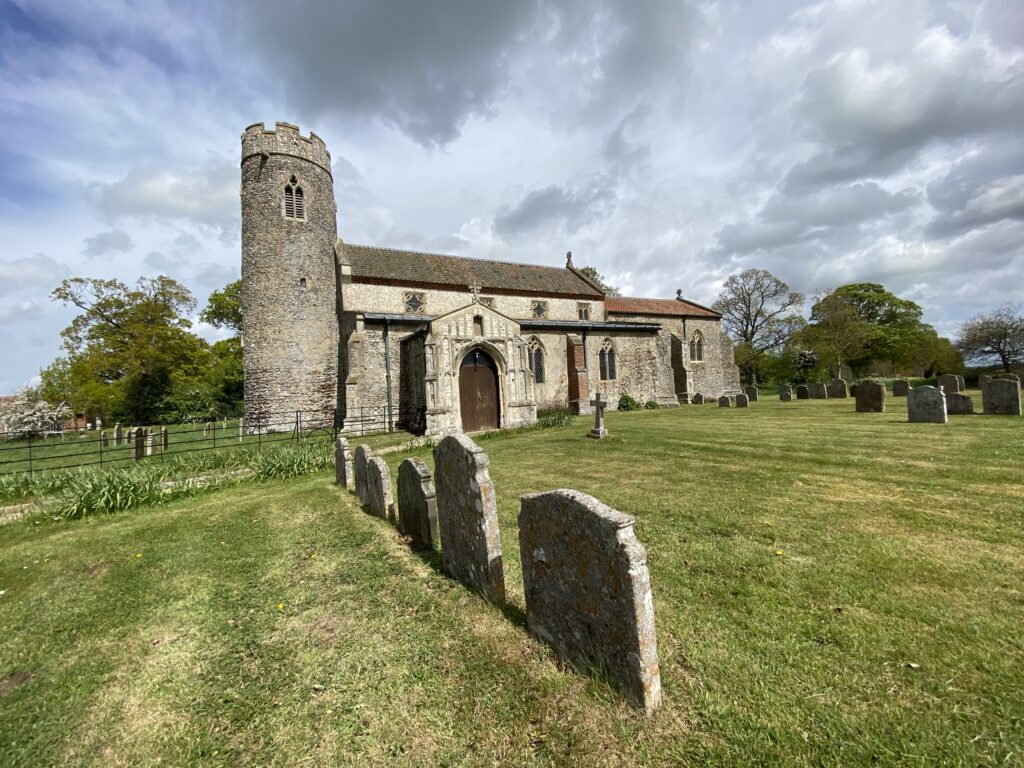
St Andrew, Wickmere
Window restoration 2020
Work to restore the east window was completed by late October. Glazier Neil Forkes has included a painting of an Anglo-Saxon sword pommel – found on a nearby farm – in the restored window. See full story below.
Description and history
The church is somewhat isolated overlooking the surrounding countryside. South west of Aldborough in an area where there are several round towered churches.
The tower is circular for its full height and tapers slightly towards the top. There is a large quantity of iron-bound conglomerate in the lower part of the tower: some laid at angles, giving a herringbone effect. The quoins of the original nave west wall and the fillet between the tower and nave west wall can be seen on the south side. The tower arch is cruck shaped.
The tower and nave wall are probably Saxon, although the upper, predominantly flint section of the tower may have been rebuilt in C14 – see the article by Richard Harbord in The Round Tower (December 2010). North and south aisles were added in C14 and C15: the clerestory and porch have fine white flintwork. Inside there are old pews and bench ends in the aisles, a minstrel in the chancel, rood screen, painted panels in the pulpit, two large chests, Dix family sarcophagus in the chancel, and many references to the Walpoles who made Wickmere their church when it became ruinous.
Jack Sterry describes Wickmere in his 2003 book Round Tower Churches: Hidden Treasures of North Norfolk.
There is a good guide book. The last major restoration was undertaken in 2009 with some funding from RTCS.
